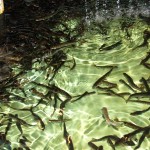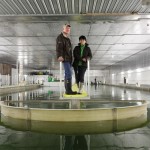Many are familiar with farmed salmon, catfish or tilapia. But there are many more potential species, says a research scientist at an aquaculture facility here. “When you compare fish farming to terrestrial farming we have thousands of different fish species that we could potentially farm… and when you compare that to terrestrial farming we have










